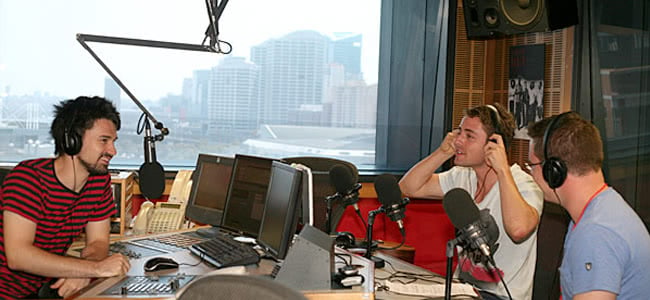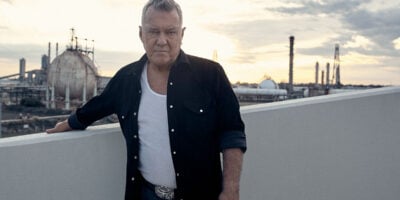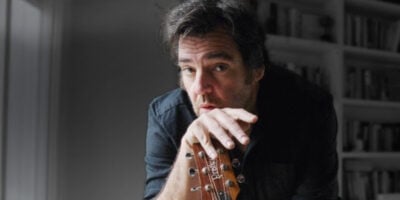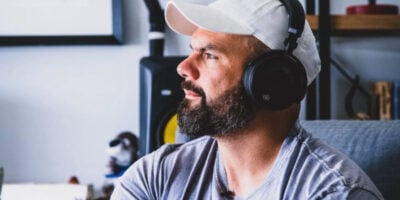Whether it’s on a local community station, a national broadcaster or a large commercial radio outlet, receiving radio airplay is an important step for any musician hoping to gain recognition. Thanks to the over saturation and accessibility of music online, receiving radio airplay is as important as ever.
So just how do you go about getting you music to the masses, or rather how to you get your music to those able to reach and influence the masses? We chatted with three experts, each with very different backgrounds and histories working within the radio sector to discover some insider’s tips on ‘how to get played on radio’.

Nick Findlay is the Assistant Music Director at triple j, one of Australia’s most influential music stations. Nick has worked in radio since the age of 16, moving through various community stations. After graduating from the Australian Film Television and Radio School (AFTRS) in 2005, Nick started working in the music library at triple j and is now the Assistant Music Director, helping to program, schedule and hunt down new music for the station. He’ll be speaking as part of the BIGSOUND music conference this September.

John Zucco is the Director of The Right Profile, an Australian independent Radio and TV plugging company based in Sydney. He services music to all Commercial and Non-Commercial Radio and TV outlets such as Triple J, ABC, Communities, NOVA, MMM, Today Network etc. Before The Right Profile, John worked at both Major and Indie record labels working as a National Promotions Manager, Australian Music Label/Marketing manager, and in Sales and A&R.

Adam Christou is the music director of Perth’s community station RTRFM 92.1 FM. Before moving from Melbourne to Perth to take up the position of Music Director at RTRFM, Adam was involved with a number of Melbourne based community stations, which included Triple R FM (co-hosting Australian program Local & Or General), and SYN FM (Music Director and Vice President of the Board). Adam will be speaking at this year’s BIGSOUND music conference.
Know Your Stations
Adam: “Every community radio station is different you may have large success getting your music played on one station but have less interest on another station.
Love Music?
Get your daily dose of metal, rock, indie, pop, and everything else in between.
Each station will have its own internal culture and vibe. Getting played on these stations might be as simple as some presenters seeing you live and being moved by your gigs – other stations may get excited from your demo, or read about you on a blog and then want to play you. It really changes depending on the show, presenter and station you’re speaking with.”
John: “I have so many acts hitting me up and saying that their song is ideal for the J’s [triple j] and they expect it should be added. So often it’s on the commercial side, but they don’t like that kind of feedback because they think they’re ‘indie’, so they get someone else to do their bidding and waste time/money pitching the wrong network.”
Do Your Homework
Adam: “It’s a wise idea to do a quick research on the programming grid [what shows they have] for the main stations you’d like to service directly (triple j, RTR, RRR, SYN, PBS, FBi, 2SER, 4ZZZ, Radio Adelaide, etc).
Once you’ve decided what stations you’d like to send your music to – have a look on their website and take down the following notes:
– Which shows would be most likely to play your style/genre of music
– What is the email address/correct point of contact for the music director/programs you’d like to hear your music. If a station is very small, they may have a station manager or program manager who facilitates this role instead. It can never hurt to call or email the main contact point to ask the best person to reach.”
Plan For The Long Term
John: “I often tell young and developing acts/managers that they have to consider the long game. Working radio is a marathon and not a sprint.
Put together a 18 month – 2 year plan, factoring in that you’ll be pitching multiple tracks and developing the act. Work hard and leave no stone unturned.”
When Contacting Community Stations, Localise
Adam: “For community radio, I recommend focusing on the bigger metro stations in each capital city, and doing a smaller service to your local sub-metro or regional station. AMRAP (Australian Music Radio Airplay Project) can help you cover the wider community radio network and national regional stations.”
Decide Whether To Service Physically Or Digitally
Nick: “There’s a few different ways to get your music to triple j, but when it comes down to it servicing falls under two main categories: digitally and physically:
– Being 2014, digitally servicing music to a radio station makes the most sense – it’s easy, quick, less messy, more environmentally friendly, and it’s pretty much impossible to misplace a wav file under piles of CDs. You can do this yourself, for free, through countless services online such as Dropbox, Soundcloud, Google Drive – just do an online search for ‘free file sharing’ and you’ll meet a treasure trove of options.
– A lot of people still choose to service music physically, by either sending us CDs in the mail or by coming into our Sydney studios on one of our music open mornings (Mon/Tues 9-12noon).
No special treatment is given to either physical or digital delivery, so just do what works best for you. That said, the perks of digital servicing for both the artist and triple j far outweigh physical servicing.”
Adam: “I recommend servicing your music to community radio in three main ways:
– A physical service (CDs) With many community stations you can walk in and drop them off directly (some stations will even let you drop CDs off directly into show pigeon holes).
– A digital service, make this as universal and easy to access as possible.
– Do both of the above – some stations haven’t fully transferred over to digital play out systems and most presenters are still using CDs, you can increase your chances of potentially being played by covering both angles.”
Have A Media/ Radio Servicing Kit Ready
Nick: “In a nutshell, we want NEW music and a BRIEF press release or fact sheet that gives us some info on you as an artist. Just a small bit of info and some great new tunes is all we need, don’t feel like you need to include a thesis dissecting your album track-by-track or a folder of glossy band photos. If you’re sending an EP or an album, highlight the ‘focus tracks’ or the upcoming ‘singles’, as we can’t always listen to the whole record immediately.
If you’re digitally servicing us music, email us a link to a wav download and if possible an online stream. The stream lets us listen to it instantly, while the wav link means we have a broadcast quality version in case we love it so much we want to put it straight on air. NEVER email us an mp3 or a wav as an email attachment, our inboxes are bursting at the seams with big files!
If you’re servicing us physically, make sure the CD is an audio CD (not a data CD), is labelled correctly and is of broadcast quality (i.e. don’t just burn poor quality 128kbps mp3s – give us your best stuff!).”
Adam: “For a Physical service:
– You’ll need to organise around a minimum of 4-5 CDs to the key programs you think would play the release.
– Put these all in one parcel marked to the music director and print out some bios as well. Mark which shows you’d like these given to.
– Live near the station/in the same city? Find the address an pop in.
When digitally servicing, include the following in your email:
– A streaming link so that someone can preview the track before downloading. I recommend using a simple, commonly used site like soundcloud or bandcamp.
– A download link in at least 320 kbps mp3 or .wav format. Do not attach files, these clog up email accounts. You can use a site like dropbox, google drive or wetransfer to set up easy to access download links.
– Attach your bio/info about the band as a pdf.
– Make sure to let people know if you’re playing any gigs/shows and what cities they’re in.”
Sign Up To AMRAP
Adam: “The Australian Music Radio Airplay Project (AMRAP) provide some great tools for artists and bands to send their music out to community radio. It’s worth looking into AMRAP and seeing if they may suit your musical project.”
Have Realistic Expectations
John: “The amount of tracks serviced each and every week to radio is truly eye watering. Between triple j/ Double/unearthed/Today Network/Community/Triple M/NOVA – we are talking serious numbers.
These radio outlets may only add 6-12 tracks each week, if that. Community radio generally don’t have additions. Announcers play what they want, cool, but this means the competition is fierce.”
Nick: “When following up on music you’ve serviced, send us an email or call us, but be patient – we will get to you, but we’re also likely to be flooded with similar requests, so it may not be instantaneous.”
Build Industry Relationships
John: “One of the keys to working radio are relationships. Also understanding the dynamics and intricacies of the format. The ability to constantly engage key radio people and keep them across your acts, thus scoring the elusive radio add. You need to be credible, have some wins and significant projects under your belt. Its important to be a straight shooter. Bullshitting is not the way to go.
Even with the evolution of technology, Radio is key in breaking an artist and always will be.”
Try To Stand Out For All The Right Reasons
Adam: “This is a hard one to explain: at the end of the day, we tend to play things that excite and challenge us the most. If you’re creating music that is well-represented already in your local scene, think about the point of difference that makes you stand out amongst your peers and focus on it.
having a great song sounds like a cliche, but it really does make a big difference as to whether or not you might get spun on a free-form community radio station.
The other big thing to remember is finding the show that celebrates your style of music, your niche and your scene and ensuring those presenters hear your music and have a chance to consider it for play.”
Nick: “Rule #1 – flashy packaging, handfuls of glitter and gimmicks do not work. Good tunes don’t need to be dressed up to stand out, they stand out on their own!
Along with that, just make sure you’re active all round – get out there and play gigs, build a loyal fan base, tour to other cities. If you’re making good music and ticking all the boxes, we might come knocking on your door.”
[include_post id=”416439″]

































